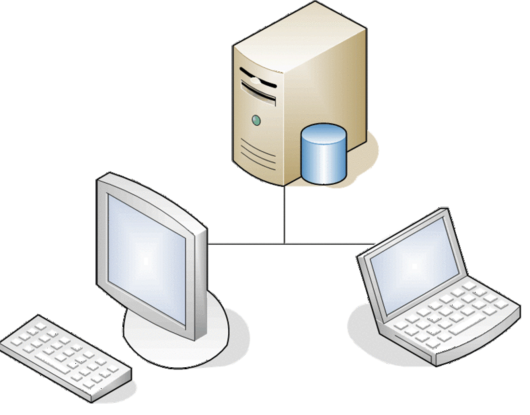Technical Prerequisites
- In the ideal case, a PC lab equipped with enough computers for all students, with an Internet connection, a translation memory tool, a word processor, CD-ROM dictionaries, etc. Otherwise, a classroom with at least one PC equipped with an Internet connection, a terminology management tool, a word processor, CD-ROM dictionaries, etc.
- The translation memory tool available in the institution must be available as client/server solution or as multi-user database. In the latter case, teachers have to make sure that all students are able to concurrently log and edit the database (see also eCoLoTrain TM Course 2).
Working Methodology
In this scenario, the teacher creates a translation memory database before the beginning of the course which will be available as a server-based or as a multi-user TM database. Students can access it from home or from the PC lab for preparing their translations as homework, and for entering their translations using individual User-IDs and the attribute fields defined at the beginning of the course.
- The server-based or multi-user TM database prepared by the teacher and modified by students will be displayed in class for discussion.
- During classes, teacher and students can discuss translation proposals. By using translation memory tools, each or some of the translation units can be opened to display students' different proposals and discuss correct or incorrect translations, collocations, lexical and language-pair specific problems, etc.
- Whilst displaying the common TM in class, a given error typology can be applied to classify students' translation proposals. When working with error typology, special attention should be paid to possible translation errors originating from the use of TM - e.g. sentence-orientated translation, text cohesion problems, 100%-matches not fitting in context, etc.
- If available in the TM tool used, a concordance feature can be used to show different translations or phrases in different contexts.
- In the same way and depending on the database structure, filters can be applied according to various criteria to show different information contained in the TM database.
- According to the resources available in the classroom (the Internet, CD-ROM dictionaries, paper dictionaries, etc.), students can research and collect new information during the class without necessarily editing their translations and entering the new translation strings directly in the database (see also eCoLoTrain course ICT 5).
- Online correcting or editing translation units in the TM database can be completed either in class or assigned as homework.
- Teachers can ask students to enter their corrected translations in the TM database as new entries, thus showing the history of the translation of each student. This, in turn, represents interesting material for translation studies; for example, filtering a TM database according to error types and creation dates of entries could show the development of translations of a particular student, or could allow the investigation of how certain error types have been corrected, etc.


